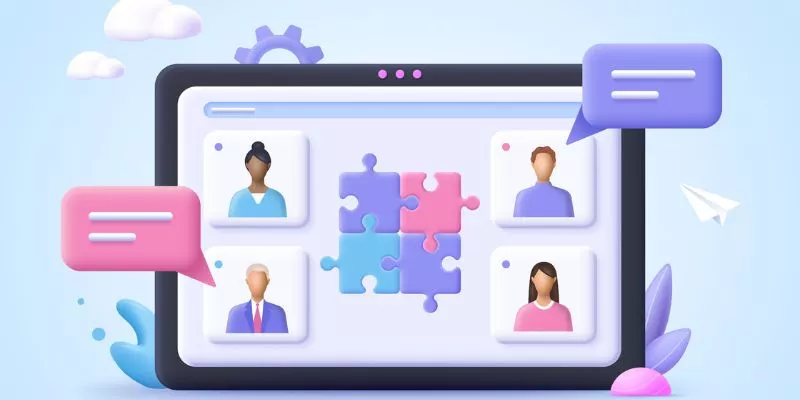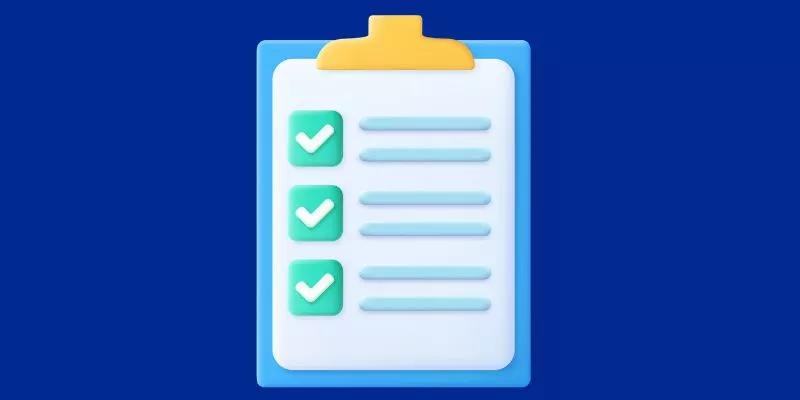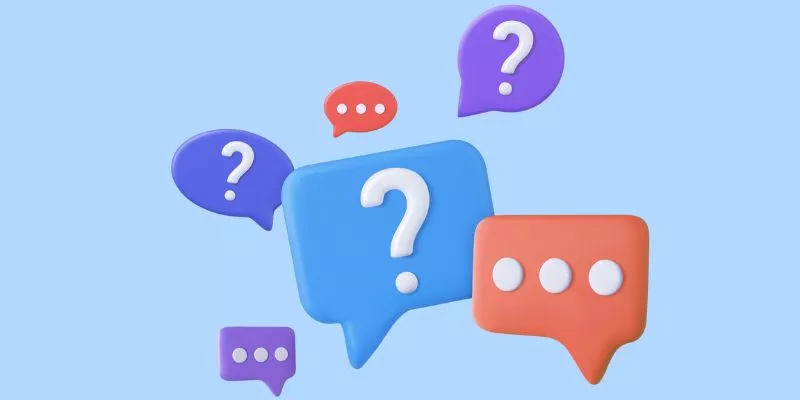When you have a particular prospect in mind, it’s considerably simpler to connect with your target audience.
However, while you may be certain who that person should be, your social media manager might have a different opinion. And your sales team could suggest something else again.
It’s easy to get lost in the details of monitoring your most recent engagement rates and marketing initiatives as a social marketer—or any marketer, for that matter.
Buyer personas remind you to put your customers’ wants and needs first and assist you in producing content that more effectively targets your ideal consumer.
This guide will show you how to create customer personas for your business, so you can start marketing smarter.
What are Buyer Personas?

A buyer persona is a research-based profile that represents your target customer. It takes into account demographics like age, gender, income, and education, as well as psychographics like interests, values, and attitudes.
Creating buyer personas helps you better understand your target market and figure out what content will resonate most with them.
It’s essential to have more than one marketing persona for your business. Depending on what you sell and who your target customers are, you could have 2 or 3 different personas—or even more.
For example, a women’s clothing store might have a primary persona: a 25-year-old woman who loves fashion and is looking for the latest trends. But they might also have a secondary persona: a 40-year-old working mother who needs stylish and practical clothes.
Creating buyer personas ensures that everyone in your company is on the same page when it comes to your target market. It also helps you make more relevant and targeted content.
Why Do You Need Customer Personas?

As a business owner or marketer, it’s essential to understand your target audience. Who are they? What do they want? How can you reach them?
Creating buyer personas is one of the best ways to answer these questions.
You can better understand what your customers want and need when you have a detailed persona. You can also figure out the best way to reach them with your marketing message.
Creating customer personas also has other benefits, including:
Helping you create more targeted content
Buyer personas help you create content that is relevant to your target audience. When you know your persona, you can figure out what topics they’re interested in and what type of language they use.
You can also use your buyer persona to determine which social media platforms your target audience is using. This way, you can ensure you’re creating content they will see and engage with.
Assisting you in making better product decisions
Your buyer persona can also help you make better product decisions. When you know your target customer, you can figure out what kinds of products they’re looking for and what features they need.
This information can help you decide what products to create and how to position them. It can also help you determine which features to include in your product and how to price it.
Allowing you to focus your marketing efforts
Creating buyer personas allows you to focus your marketing efforts on the channels that are most likely to reach your target audience.
For example, if you know your target persona is on Facebook, you can focus your energy on creating content for that platform. You can also use Facebook advertising to reach your target customer where they are already spending their time.
Helping you track your marketing progress
Once you’ve created your buyer personas, you can use them to track your marketing team’s progress.
For example, let’s say you create a blog post that you think will be popular with your target persona. You can track how many people from your target persona read the blog post and how long they spend on the page.
You can also use Google Analytics to see how people find your website and what pages they spend the most time on. This information can help you adjust your marketing strategies to reach your target audience better.
Enabling you to create more personalised content
You can make more customized content with a detailed buyer persona.
For example, if you know that your target persona is a working mother, you can create content that speaks to her specific needs and concerns. You can also create ads that are tailored to her interests.
Creating buyer personas takes time and effort, but it’s well worth it. When you clearly understand your target audience, you can create content and marketing campaigns that are more likely to reach them.
The Risks Of Failing To Understand Your Customers

Now that we’ve looked at the benefits of creating customer personas let’s take a look at the risks of failing to understand your customers.
You’ll miss out on potential customers
If you don’t take the time to understand your target audience, you could miss out on potential customers.
For example, let’s say you’re selling a new product. You might think your target audience is everyone who uses the product, but that’s not always the case.
It’s essential to understand who your target customer is and what needs they have. If you don’t, you could miss out on potential customers looking for a product like yours.
You could waste your marketing budget
You could also waste your marketing budget if you don’t understand your target audience.
For example, let’s say you’re running a Facebook ad campaign. If you’re not targeting your ads correctly, you could be wasting money on ads that no one will see.
It’s important to use your marketing budget wisely and target your ads to the people who are most likely to be interested in your product.
You might create content that no one will read
If you don’t understand your target audience, you could create content that no one will read.
It’s essential to create content that’s relevant to your target audience. If you don’t, you could waste your time and effort on content that no one will read.
You could alienate your existing customers
You could alienate your existing customers if you don’t understand your target audience.
For example, let’s say you’re a B2B company and create a blog post aimed at consumers. Your existing B2B customers might feel like you’re not speaking to them.
It’s important to create content that’s relevant to your existing customers. If you don’t, you could end up losing them.
You might make poor business decisions
You might also make poor business decisions if you don’t understand your target audience.
For example, let’s say you’re considering launching a new product. If you don’t understand your target market, you might launch a product that no one wants.
It’s essential to have a clear understanding of your target audience before making any significant business decisions.
Creating customer personas can help you avoid these risks. When you have a clear understanding of your target audience, you can make better business decisions and create content that’s more likely to reach them.
How To Create Customer Personas

Now that we’ve looked at the benefits and risks of creating customer personas let’s look at how you can create them.
1. Do thorough audience research
The first step is to do thorough audience research. You need to understand who your target audience is and what needs they have.
There are a few different ways you can do this:
- Use Google Analytics to understand your website’s visitors and what they’re looking for.
- Look at your existing customer data to understand who’s buying your products and why.
- Use social media to understand what people say about your brand and industry.
Compile audience data from your social media analytics, your customer database, and Google Analytics to narrow in on details like:
- Age: Age is one of the most important factors to consider when creating marketing personas. It can help you understand their needs and how they like to consume content.
- Gender: Gender can also help you understand your target audience’s needs. For example, women are typically more interested in health and beauty products than men.
- Location: Location can help you understand your target audience’s needs. For example, people in cold climates might need different products than those in warm climates.
- Interests: Interests can help you understand what content your target audience would be interested in.
- Spending power: Spending power can help you understand what products your target audience can afford.
2. Conduct qualitative research
Qualitative research is another crucial step in creating customer personas. This type of research helps you understand the needs and wants of your target audience.
There are a few different ways you can do this:
Customer surveys
Ask between 6 and 10 questions about behavioural drivers, barriers to purchasing, and mentality to obtain usable information. Depending on your line of work, the inquiries will differ. But at the end of the day, you’re always looking for actionable knowledge that meets your needs.
Phone and in-person interviews
Interviews with your target consumers are excellent for obtaining qualitative information. They provide insight into your target consumers’ thoughts and feelings about your product or service.
In-person interviews are ideal, but they’re not always practical. Phone interviews are the next best thing if you can’t meet in person.
Phone interviews have the advantage of being less time-consuming and more flexible. They also allow you to reach a more significant number of people in a shorter amount of time.
However, phone interviews have the disadvantage of being less personal. This can make it harder to build rapport with the person you’re interviewing.
Web and exit surveys
Web and exit surveys are a quick and easy way to gather qualitative data. They’re typically used to collect feedback about a website or product.
Read discussion forums and review sites
Discussion forums and review sites are a great way to understand the needs and wants of your target audience. These sites are full of people talking about their experiences with products and services.
You can learn a lot about your target audience by reading these discussions. You can also get ideas for new products and features by reading what people say about your competition.

3. Conduct quantitative research
Quantitative research is another critical step in creating customer personas. This type of research helps you understand the demographics of your target audience.
There are a few different ways you can do this:
Buy lists of leads
You can buy lists of leads from companies that specialize in lead generation. These companies typically have databases of people’s contact information.
You can use this information to create a database of your own. This method is quick and easy, but it can be expensive.
Use social media listening and tracking tools.
Social media listening and tracking tools help you track mentions of your brand on social media. You can also use these tools to track competitor mentions.
This type of research can help you understand the demographics of your target audience. It can also help you understand what people are saying about your brand.
4. Collect additional data & go deeper
Once you’ve collected all the data, it’s time to start going through it. Look for patterns and trends in the data. This will help you understand your target audience better.
You may also want to segment your target audience into smaller groups. This will help you create more targeted personas.
Think about interests, attitudes, and activities. What do your target consumers like to do? What are their interests? How do they feel about your product or service?
The answers to these questions will help you create more detailed and accurate personas.
5. Understand how you can help your target audience
Once you’ve conducted qualitative and quantitative research, you should understand your target audience well.
Now it’s time to think about how you can help your target audience.
What needs does your target audience have?
How can you help them meet those needs?
What problems does your target audience have?
How can you help them solve those problems?
Answering these questions will help you understand what your target audience is looking for. It will also help you create content that appeals to your target audience.
6. Create your persona
Now that you’ve gathered all the data you need, it’s time to create your persona.
Start by giving your persona a name. This will help you remember who your persona is and what they’re looking for.
Then, fill out the rest of the persona template with the information you’ve gathered.
Here’s an example of a persona template:

Name: John Doe
Demographics:
Age: 35
Gender: Male
Location: Los Angeles, CA
Income: $50,000/year
Education: Bachelor’s degree
Family status: Married with two kids
Interests/Hobbies:
• Listening to music
• Hiking
• Watching movies
Attitudes/Beliefs:
• Loyal to brands he likes
• Skeptical of new products
• Wants products that are easy to use
Needs/Problems:
• Needs to save time
• Wants to be more organised
• Has trouble staying on budget
Goals/Motivations:
• Wants to spend more time with his family
• Wants to save money
• Wants to be more productive
Pain Points:
• Frustration with products that are hard to use
• frustration with products that don’t meet his needs
7. Create multiple personas
If you’re targeting a large audience, you may need to create more than one persona.
Creating multiple personas will help you target your content more effectively. It will also help you understand the needs of different segments of your target audience.
8. Test your persona
Once you’ve created your persona, it’s crucial to test it.
Ask yourself if your persona is realistic. Does your persona represent a large enough segment of your target audience?
You may also want to ask people in your target audience if your persona is accurate.
9. Update when necessary
As your business grows, your target audience may change. When this happens, it’s important to update your persona.
You should also update your persona if you notice that people in your target audience are changing.
For example, if you notice that more people in your target audience are getting married or having kids, you may need to update your persona to reflect these changes.
10. Effectively use your persona for your marketing campaign
Now that you’ve created your persona, it’s time to put it to use.
Your persona should be used to guide your marketing strategy.
It should help you determine what content to create, what channels to use, and who to target.
Creating a persona is a great way to ensure your marketing campaign is targeted and effective. It will also help you better understand your target audience.
How to Find Interviewees for Researching Buyer Personas?

There are a few ways to find interviewees for your buyer persona research:
Use your current customers
Your current customers are an excellent resource for persona research. They already know and love your product or service, so they’re the perfect people to ask about their needs and pain points.
To find interviewees, you can send an email to your list or post in your customer forum. You can also reach out to customers who have recently made a purchase.
Use social media
Social media is a great way to find potential interviewees for your persona research. Look for people who are talking about your industry or product. You can also use social media to find influencers in your industry.
Use your referrals
If you have a referral program, you can use your referrals to find interviewees for your persona research. Ask your customers to refer people who might be interested in your product or service.
Referrals are a great way to find potential customers who are already interested in your business.
Use third-party networks
A few third-party networks can help you find interviewees for your persona research.
One of these networks is Amazon Mechanical Turk. This network allows businesses to post tasks that need to be completed by humans.
You can use this network to find people willing to participate in your persona research.

Use online surveys
You can use online surveys to gather data if you can’t find enough interviewees.
There are a few different platforms that you can use to create and distribute your survey.
One of these platforms is SurveyMonkey. This platform allows you to create and distribute your survey for free.
Another option is Google Forms. This platform also allows you to create and distribute your survey for free.
Once you’ve created your survey, you can distribute it to your target audience. You can post it on social media or send it through email.
You can also use online surveys to supplement your persona research.
If you’re having trouble finding enough interviewees, you can use online surveys to gather data.
This data can help you understand your target audience and create a more accurate persona.
What Questions Should You Ask When Researching Buyer Personas?

When you’re researching buyer personas, there are a few questions that you should ask:
1. What are their needs?
2. What are their pain points?
3. What are their goals?
4. What are their values?
5. How do they make decisions?
6. What is their buying process?
7. Where do they get their information?
8. Who influences their decisions?
9. What motivates them?
10. What objections do they have?
These questions will help you understand your target audience and create a more accurate persona.
How to Use Your Buyer Persona
Here are a few ways that you can use your persona:
1. Use it to create targeted content
2. Use it to choose the proper channels
3. Use it to create targeted ads
4. Use it to determine who to target
5. Use it to understand your audience
6. Use it to create better products
7. Use it to improve your sales process
8. Use it to make better decisions
9. Use it to connect with your audience
10. Use it to measure your success
These are just a few ways to use your persona to improve your business. If you put your persona to use, you’ll be able to understand your target audience better and create more targeted content.
Things to Note!

Some things to keep in mind when creating personas:
Personas differ when you’re selling to businesses
If you’re creating a customer persona for a retail company, you’ll be concerned with individual consumers. However, your customer persona will be more complex if you’re selling to a firm.
Personas are not static
Your persona will change over time as your business grows and changes. As you get more data, you’ll be able to refine your persona and make it more accurate.
Keep your persona realistic
When creating your persona, it’s essential to keep it realistic. Don’t create a perfect persona. Instead, create a persona that is realistic and relatable.
Don’t forget about your existing customers
When creating your persona, it’s important to keep your current customers in mind. They can provide valuable insights into your target audience.
There’s heaps of stuff online about personas
If you’re struggling to create your persona, there’s a lot of information online that can help you. There are plenty of articles, templates, and examples that you can use.
Creating a buyer persona can seem like a daunting task. However, taking the time to do it right can be a valuable tool for your business. By taking the time to understand your target audience, you can create targeted content that will resonate with them.
If you have questions about buyer personas, feel free to comment below.
Final Thoughts!
This concludes our guide on buyer personas. We hope that you found it helpful and now have a better understanding of how to create a persona.
If you have any questions, feel free to leave a comment below. We’ll be happy to help!
Social Media for Hotels – An easy to understand guide
Social media has transformed how the hospitality industry, particularly hotels, engages with its target audience, revolutionizing hotel social media marketing. With billions of active users across various social media platforms, hotels leverage these channels to...
How to Show as offline on Instagram
Heads up: Your Instagram buddies can see when you’re online! Imagine this: You’re chilling, scrolling through Reels, when a friend starts bombing you with not-so-funny memes. The endless pinging is enough to drive anyone mad. Worse still, they can see you’re online...




